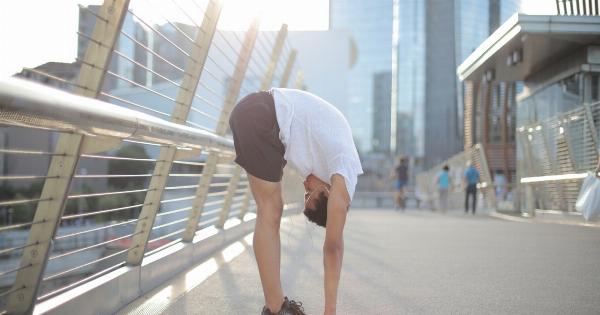Sleepwalking, also called somnambulism, is a sleep disorder that causes people to walk or perform other complex behaviors while they are asleep.
Sleepwalking is a hazardous condition because the person is unconscious and unaware of their surroundings, and they are at a high risk of injuring themselves or others. While it can be a rare and harmless occurrence for some, it is a dangerous and potentially fatal condition for others.
The Causes of Sleepwalking
Research indicates that sleepwalking is most common in children and occurs during deep sleep. It is thought to be caused by a combination of genetics and environmental factors that affect the sleep cycle.
Some medications and sleep disorders such as sleep apnea or restless leg syndrome can also trigger sleepwalking in individuals who are predisposed to the condition. Other potential triggers for sleepwalking include:.
- Stress or anxiety
- Alcohol, sedatives, or other medications
- Fever or illness
- Noise or light
- Irregular sleep schedules or a lack of sleep
The Risks of Sleepwalking
The dangers of sleepwalking are manifold. Sleepwalkers are in danger of bodily harm from falls, collisions with objects, or accidents caused by manipulated objects.
They may also inadvertently injure others if they interact with other people during episodes of sleepwalking. Additionally, sleepwalkers may wake up in unfamiliar environments, disorientated, and attempting to walk home, adding an additional layer of risk to their behavior.
A sleepwalker who leaves their house or falls from a high surface, such as a balcony or a window, is subject to even greater harm.
Sleepwalking and Violence
Sleepwalking can be associated with violent behavior. There have been instances where sleepwalkers have injured people or engaged in other harmful behavior while they were asleep.
This may be attributed to individual psychological or biological factors that trigger violent behavior during sleepwalking episodes. Other research suggests that individuals who have had sleepwalking episodes are more likely to have a history of emotional or behavioral problems.
Sleepwalking Diagnosis and Treatment
If you, a friend, or family member experiences sleepwalking regularly, you should see a doctor. The doctors will likely refer you to a sleep specialist who can help diagnose and treat the condition.
Important first steps to prevent sleepwalking episodes include good sleep hygiene, such as getting enough sleep in a calm environment, and avoiding alcohol or other depressants before bedtime. In some cases, medication may be prescribed to regulate the sleep cycle or reduce anxiety and stress. If you or someone close to you experiences violent or unusual sleepwalking conduct, it is critical to seek a doctor’s care immediately.
Sleepwalking Prevention
First measures to prevent sleepwalking involve good sleep hygiene such as going to bed at the same time every day, rising at the same time, reducing distractions, and exercising beforehand to decrease stress levels.
Keeping the house or apartment clear of sharp or heavy items that may cause injuries, such as scissors or irons that are left out and not stored properly. Eliminating exposure to environmental triggers, such as bright light or noise, can also reduce the risk of sleepwalking episodes.
Additional precautions include installing alarms on doors or windows and locking doors and windows to restrict sleepwalkers to safe locations.
Conclusion
Sleepwalking can be a hazardous and potentially life-threatening condition that affects children and adults alike.
It is caused by a variety of environmental and genetic factors that interact with the sleeping cycle, leading to complex behavior during sleep. The hazards of sleepwalking can include bodily injury to oneself or others, violent outbursts, and even fatalities.
If you or someone you know experiences frequent sleepwalking episodes, consult with a doctor to receive a diagnosis and start prevention steps to ensure that your environment is secure and free of harmful items or mechanical instruments.































